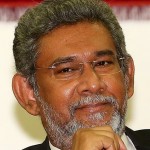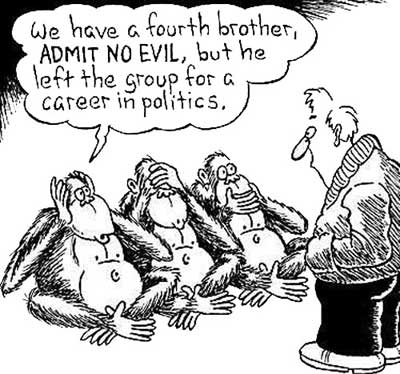By Dayan Jayatilleka, ‘Colombo Telegraph, March 7, 2015

“The struggle, a real and bloody struggle that arises here, requires a different chain of thought and a different intellectual constitution…” – Carl Schmitt, ‘The Crisis of Parliamentary Democracy’, 1923.
It is not without reason that Graham Greene once said “never trust anyone with a return ticket”. Dr. Siri Gamage is playing a game that an expatriate academic can afford to. Those of us who have opted to live here cannot afford such rootless cosmopolitanism and intellectual dilettantism.
The question of definition is a serious one. The question of nationhood is a deadly serious one. I am concerned with the political consequences of definitions, not with academic quibbling about them. There can be academic definitions brought in the service of everything and its opposite. I care little for those. The question of Sinhala, Tamil, Sri Lankan nationhood or otherwise is not an academic question. At the least it is a strategic question but in its deepest sense it is an existential question. The claim of Tamil nationhood and the Tamil denial of the status of national minority pose an existential threat to the Sinhalese whose only country it is, and to the state formation on the island.
There is no bi-national, multinational or pluri-national state in Sri Lanka, and there must not and cannot be. There can only be a nation–state in Sri Lanka. The only debate is which nation that is: Sri Lankan or Sinhalese. I’d say both. In a civic and diplomatic sense it is a Sri Lankan nation and a Sri Lankan national identity, the best example of which is our cricket team and the phenomenon of ‘cricket nationalism’. In the political and ethno-national sense there is only one nation in Sri Lanka and that is the Sinhalese nation. In a cultural sense we are a multiethnic, multicultural, multilingual society, with the Sinhala Buddhist civilization as the main axis of the island’s civilization. Thus in a civic and cultural sense our nationalism and patriotism must be pluralist. However in a political sense, our ideology must be monist and unipolar. Culturally we can be ‘federal’ (and the North can enjoy ‘cultural autonomy’); politically we must be unitary.
Nationhood and nationality are issues of identity. Identity does not take place in a vacuum. Identity is at least in part, tied to space and time i.e. place and time. People fight and die over identity.
Our lives, those of us whose destiny or choice are to live and die here rather than to run and hide as strangers in a strange land; the lives of those of us who serve this country even while overseas –writing for the media back home, fighting diplomatic battles in foreign lands—are bound up with the destiny and long history of this place, this island.
Our personal narratives are part of the larger longer narrative of this country, this island. This place is no abstraction. It is a relatively small island off the tip of the huge landmass of India, with south India as its neighbor. The destiny of the country and its people has been determined by the two facts that it is an island strategically placed in the Indian Ocean and off the tip of South India which contains at last count, seventy million people of a specific ethnic, linguistic and religious origin. Those people have co-ethnics in the North and East of our island.
The history, the narrative, the destiny of this island – our story—does not derive from petty academic treatises, but precisely from the struggles for power for the island and its various areas. This struggle for power has a North-South vector or axis. The principal motor force of the history of this island has been the struggle for power between the North (the internal North and the External North; the near North and the Far North) and the South. It is the South that has resisted the hegemonic incursions from the North, including the global North.
The claim of Tamil nationhood is the flip side, the other way, of the expressing the refusal to accept that on this island the Tamils are a national minority. The Catholics of Northern Ireland never had a problem in accepting that they were a minority in the North. They simply did not wish to be treated as second class citizens; to be oppressed. The Tamil delusion is that on this island they are entitled to the same political status, weight, space and share of power as the Sinhalese who are a vast majority. The Tamils cannot have the same weight and space in the island’s political order; in the structure of power relations and ruler-ship of this island. This is undemocratic and unrealistic.
It is the Tamil refusal, indeed their state of psychological denial that their struggle should be for equal rights as citizens and safeguards against discrimination as minorities, that has been at the root of the bloodshed. This refusal and denial stems from a misplaced sense of superiority which equates a majority and a minority. According to this expatriate academic Dr. Siri Gamage’s definition there are no majorities and minorities in any society; any country; any state. He and his ilk have just abolished such definitional distinctions and geopolitical realities upon which they are based.
My insistence that the Tamils are a national minority is not in the least Sinhala racist. I belong (though I am not a parishioner) to the Catholic community. I have no problem in recognizing that it is – we are—a religious minority in Sri Lanka. I would have to be a lunatic to pretend that the Catholics of Sri Lanka who are around 6% of the population have an equal status as a collective as the Buddhists who are 67%. I am not one. I would and do however, fight hard against any attempt at the oppression of religious and any other minorities. Tamil nationalism believes in such lunacy which turns a majority and a minority into equals and abolishes in their collective mind, the fact of being a minority. Tamil nationalism acts upon it. Fellow travellers such as Siri Gamage, Brain Senewiratne, Laksiri Fernando and their junior league dress up that lunacy in threadbare academic vestments (which incidentally ignore the UN landmark documents on Minority Rights).
The recognition of Sinhalese as the majority and Tamils as the minority does not imply a conception of Sri Lankan society or state which is hierarchical i.e. is an inverted pyramid. The Sinhalese are not on top; the Tamils at the bottom. My realist conception is of Sri Lanka as a series of concentric circles, in which the Sinhalese Buddhists are the large core of the formation, with the Sinhalese being the next concentric circle. In the alternative it can be seen as a pie, in which the Sinhalese naturally get the larger slice of power because they constitute the largest stakeholder.
I am not such a dupe that I do not know the implications of pretending that the Tamils are a nation. This opens the door to the idea of national self-determination and thereby that of a separate state. This means the carving up of the island. I suggested that any experiment in Tamil nationhood be conducted where there are seventy million Tamils and an affordably large landmass, indeed a subcontinent. Sri Lanka being an island does not have the geopolitical space to even consider such a dangerous claim. Either there is one Sri Lankan nation or there is a Sinhala nation as the political core of such a Sri Lankan nation. There aren’t two nations on this our island.
The history of this island is that of a struggle over what Nietzsche so famously called the Will to Power. It is the struggle between on the one hand, those whose only home this is and can be; those whose destiny is inextricably linked with the island, the Sinhalese – living in the Southern two thirds—and those who are not and yet seek a share of power far in excess of their numbers or their commitment to a united Sri Lanka. It is a struggle over who will win (Lenin); a struggle to prevail (Nietzsche).
Sri Lanka is too small for two states; two kingdoms—especially not with Tamil Nadu next door and a modern history of colonial conquest from the West. It is too small and vulnerable to experiment with loose centrifugal forms of state. Sri Lanka needs a strong single state which covers the natural borders of this island. Fighting against a formidable foe which rootless cosmopolitans and liberals had seen as undefeatable, Mahinda Rajapaksa restored these borders to the state. Once more our borders ran from seas to sea. This is why I stood with him even while criticizing his errors; why I still do and shall continue to—and am proud of it. At this concrete moment the destiny of the Sinhalese and of the island lie with the popular-democratic forces of vitality, resistance and national liberation mobilizing in the Mahinda Movement.

Dayan, for you know to say, ‘there can ONLY be a nation-state in SL’. That is an audacious statement. Nation state is only a creation, which therefore can be dismantled by the struggles of the oppressed “minorities” should you wish to label them. To continue your thread of argument on nation state – one can also be logically propelled to say, by understanding the existential questions on the ground, that there can ONLY be a TWO-Nation State in SL. Tamils might be a ‘minority’ yet they are a nation. There are two nations in the island, that is a fact, for your information! To couch it in biblical language: Two nations struggling with one womb. Therefore, Let my people Go slogan raised by Fr Emmanuel is faulty. Where else can the Elam Tamils go? But to co-habit peacefully as Two Nations. That is NOT rocket science.